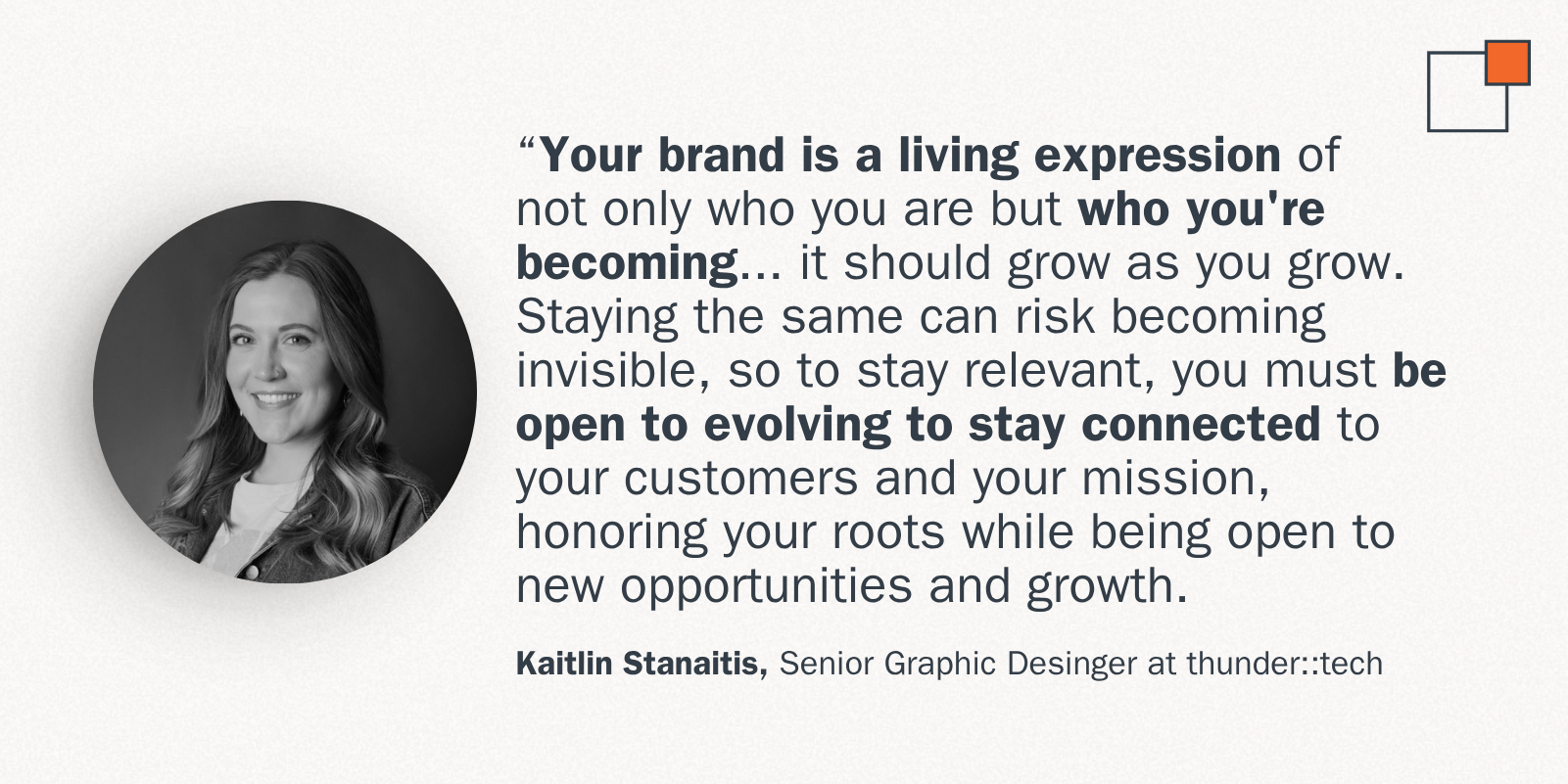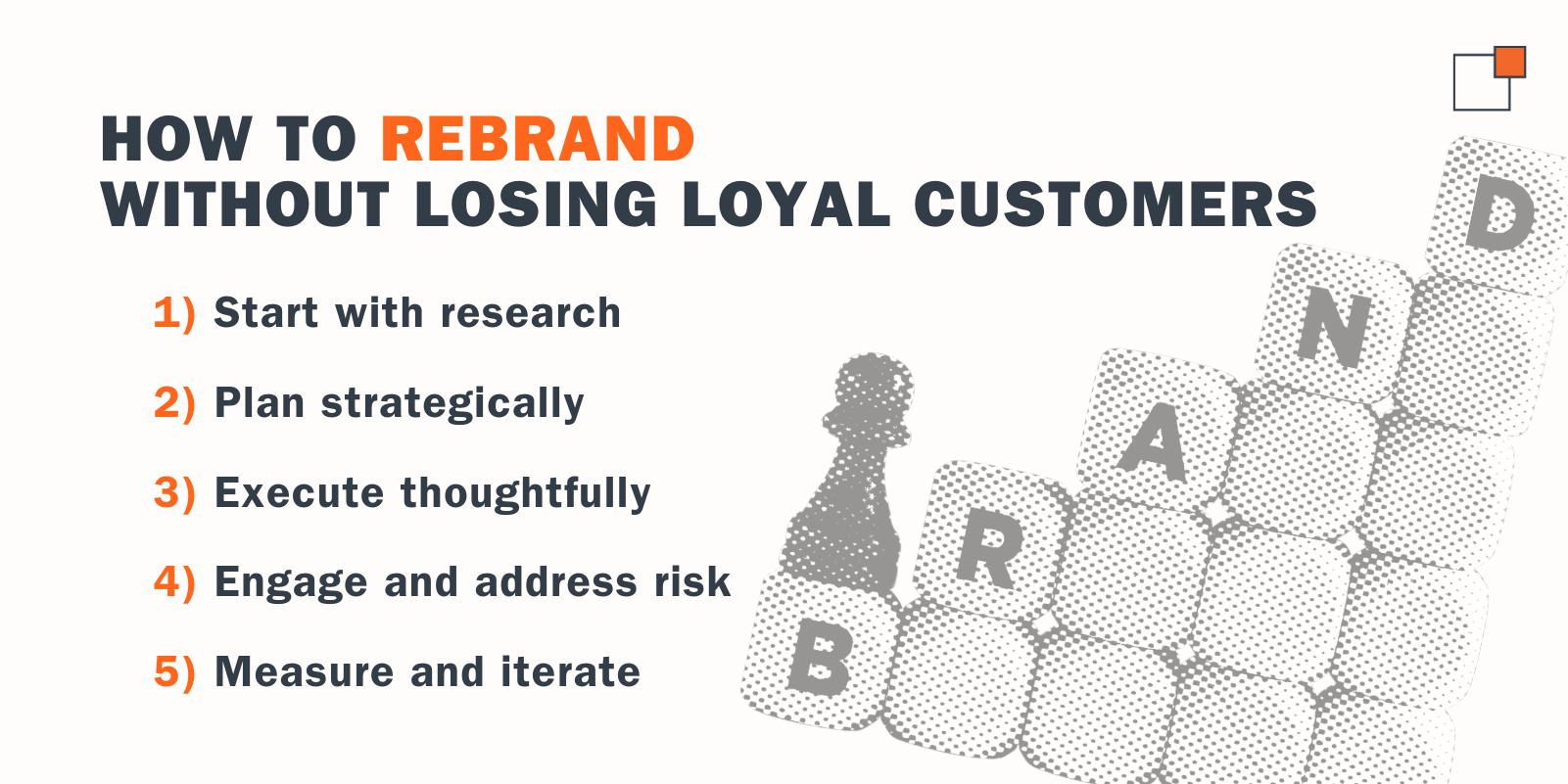The Rebranding Tightrope
How to Evolve Without Losing Loyal Customers
Is your brand ready for a fresh start? Rebranding can be an exciting opportunity to modernize your look, attract new customers and signal a new chapter, but it’s also a high-stakes balancing act. For every brand that nails it, there’s a cautionary story about customer backlash and lost trust.
A strong brand reputation takes years to build but can unravel quickly if a rebrand isn’t handled carefully. The secret is to evolve your brand without erasing what made it special, so you don’t alienate the customers who helped you get where you are today.

Rebranding isn’t just about a new logo or a flashy color palette. It’s a thoughtful process that impacts everything from your messaging and visuals to company culture and customer experience. To walk this tightrope successfully, you need a clear strategy that starts with research, moves into solid planning and ends with a thoughtful rollout and ongoing engagement.

Common reasons to rebrand include:
Use surveys, interviews, focus groups and market analysis to gather honest insights from customers and your own team. This research lays the groundwork and eliminates guessing, ensuring your decisions are smart and customer-focused.
Use digital channels to build buzz. Tease new looks, share behind-the-scenes content and engage influencers to get people excited and involved.
Rebranding is a conversation, not a one-way announcement.
Apply what you learn to adjust messaging and strategy. Rebranding is an ongoing evolution not a one-time event.

Start with research, align your teams, roll out thoughtfully and keep measuring. When done right, a rebrand is a fresh chapter full of opportunity, energy and stronger connections with your customers.
Let’s start your successful rebranding journey.

A strong brand reputation takes years to build but can unravel quickly if a rebrand isn’t handled carefully. The secret is to evolve your brand without erasing what made it special, so you don’t alienate the customers who helped you get where you are today.

Rebranding isn’t just about a new logo or a flashy color palette. It’s a thoughtful process that impacts everything from your messaging and visuals to company culture and customer experience. To walk this tightrope successfully, you need a clear strategy that starts with research, moves into solid planning and ends with a thoughtful rollout and ongoing engagement.
Step 1: Start with research — know your “why” and your audience
Before diving into design or messaging, the first priority is understanding your “why.” Why does your brand need a refresh? What are your goals? What do your customers think of your current brand? What parts resonate with them and what feels outdated or irrelevant?
Common reasons to rebrand include:
- Your look feels outdated compared to competitors
- You’re shifting your business focus or expanding into new markets
- You’ve merged with or acquired another company and need a unified identity
- You want to overcome negative perceptions or a damaged reputation
Use surveys, interviews, focus groups and market analysis to gather honest insights from customers and your own team. This research lays the groundwork and eliminates guessing, ensuring your decisions are smart and customer-focused.
Step 2: Plan strategically — audit, align, prepare
With your research in hand, it’s time to plan.- Audit your brand equity: Your current brand has value. Identify what your customers love and what needs updating, whether that’s colors, fonts, tone or messaging. Keeping what works helps preserve brand loyalty.
- Align your team: Rebranding isn’t just about changing the external look. Your employees live your brand every day. Share your research and goals early, provide training and encourage feedback. When your team owns the new brand, they become your biggest advocates.
- Craft your story: Why are you rebranding? What’s the new vision? Develop a clear authentic narrative to guide your messaging. Plan how and when you’ll share this with your audience across all channels.
Step 3: Execute thoughtfully — phased rollout and digital strategy
Launching a new brand all at once can shock your customers and spark backlash, while a phased rollout lets people adjust.- Announce early: Let your audience know a change is coming, why and what to expect.
- Phase the launch: Start with small updates like social media profiles and email signatures, then move to bigger assets such as your website and packaging.
- Update everywhere: After the rollout, make sure your new identity is consistent across all touchpoints. Inconsistency breeds confusion and mistrust.
Use digital channels to build buzz. Tease new looks, share behind-the-scenes content and engage influencers to get people excited and involved.
Step 4: Engage and address risks — managing customer reactions
Rebranding carries risks including alienating longtime customers, losing brand recognition, diluting brand values or creating market confusion. You can minimize these by respecting your brand’s history, keeping key elements customers recognize and love, communicating openly and clearly and listening to feedback with empathy.Rebranding is a conversation, not a one-way announcement.
Step 5: Measure and iterate — track what matters
How do you know your rebrand is working? Keep an eye on metrics such as:- Customer feedback through surveys and interviews
- Retention rates of existing customers
- Social media sentiment and brand mentions
- Brand awareness studies
Apply what you learn to adjust messaging and strategy. Rebranding is an ongoing evolution not a one-time event.

Where brands go wrong: common missteps and reasons for backlash
Even the best intentions can fall flat. Here are some of the most common pitfalls:- Lack of clear communication: Customers need to understand why the change is happening. Silence leads to confusion and negative assumptions.
- Ignoring brand legacy: Loyal customers have emotional ties to your brand. Tossing out beloved elements feels like a betrayal.
- Being too radical, too fast: A sudden, drastic change can overwhelm and alienate your audience.
- Not involving customers or employees: Leaving out these key voices results in changes that don’t feel genuine or relevant.
- Inconsistent brand experience: Mismatched messaging across channels damages trust.
- Overlooking emotion: Branding is about feelings as much as visuals. Neglect this and you risk rejection.
- Failing to manage backlash: Negative feedback is inevitable. Ignoring it only makes things worse. Listen, acknowledge and respond thoughtfully.
FAQs: What You Need to Know About Rebranding
Does rebranding mean changing everything?
No. It’s about evolving, not erasing. Often, it means refreshing while keeping the core of who you are.Is rebranding only for struggling companies?
Definitely not. Brands rebrand to stay relevant, grow into new markets or reflect shifts in mission.Will customers be confused by a new brand?
If you don’t communicate well, yes. But with clear phased messaging, customers adapt smoothly.How long does rebranding take?
It depends, but it usually takes months (sometimes over a year) from research to full rollout.Can I rebrand without losing loyal customers?
Yes. By respecting your brand’s legacy, involving customers and being transparent, you can actually deepen loyalty.The Rebrand: an evolution, not a revolution
At its core, successful rebranding is about respect, communication and smart planning. Your goal isn’t to lose the people who built your brand but to bring them with you into the future.Start with research, align your teams, roll out thoughtfully and keep measuring. When done right, a rebrand is a fresh chapter full of opportunity, energy and stronger connections with your customers.
Ready to take your brand to the next level?
Rebranding is a delicate process that requires strategy, care and expertise. We can help your brand evolve without losing loyal customers, balancing fresh ideas with respect for your legacy.Let’s start your successful rebranding journey.

About the Author
Abi is the Director of Communications at thunder::tech, where she leads an integrated team specializing in performance marketing, advertising, social media, content and branding. Talk to her about pop culture and her personal grading system for coffee shops.